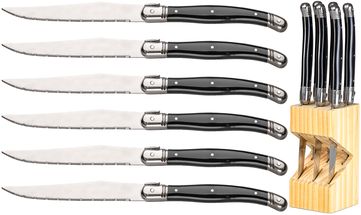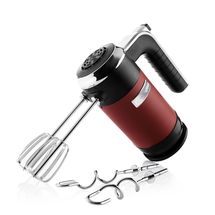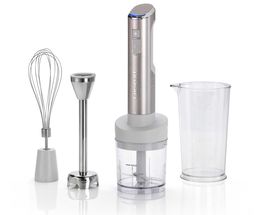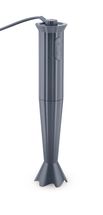
Spring has sprung at Cookinglife! What's more, pastry is in the spotlight - perfect for spring! Discover our latest products to enrich your culinary experience. Experience the season with us and let us inspire you.
View



Check out the latest Cookinglife articles
For the modern cooking enthusiast, preparing and serving delicious dishes is a given. Cookinglife offers you an extensive collection of practical kitchenware as well as popular products such as a spiral cutter, avocado cutter or tagine. A pleasant table arrangement can enhance the cosiness level of your home. In our extensive range you will find both tableware and tableware sets from top brands such as Royal Doulton and Christian Bitz tableware. We recommend our beautiful collection of Amefa cutlery.
Discover our growingrange of whisky glasses or wine glasses from Schott Zwiesel and Bormioli. If you want to order a teapot, you will also find a suitable tea box. You can offer guests a selection of tea in style. Not only that, but you will need a proper Cup Holder. Decorate the most delicious cakes with your own whipped cream dispenser. We also have a wide selection of bakeware, pie dishes, muffin trays and more. Why don't you try a Poffertjespan? Of course, you don’t want your bread to be left out in the open. View our collection of bread bins that are suitable for all types of bread.
You will be more than happy with high-quality kitchen accessories and tools. The Marcato pasta machine is a must-have. You can also easily store Wüsthof knives or Santoku knives in a knife block. If you enjoy cooking outside, a smoke oven is a great idea! A fresh salad is prepared in no time with a stylish mandoline. We also offer a range of glasses, from beer glasses to tea glasses, mason jars to drink dispensers. We can recommend Leffe Beer Glasses to you. Do you love unique design? Discover our Alessi products!
At Cookinglife, you can find the brands for everything you need to cook a delicious meal and to set a beautiful table. Take a look at the extensive range from Emily Henry and upgrade the kitchenware in your own home! Or go for a more modern look with these products from Eva Solo. A table is never complete without beautiful glassware from premium German brand Leonardo. Bring home luxurious products without breaking the bank with affordable Dutch luxe brand Jay Hill. You can even go for the minimalistic luxury of Maxwell & Williams. There is something to meet everyone's tastes and preferences, with all the best brands at Cookinglife.
When it comes to creating a delicious meal, using good quality pans, casserole pans, copper pans, and pan sets is necessary. Are you looking for a frying pan? With our diverse collection, you will have no problems finding what you need! Take, for example, our BK pans, which are made of high-quality materials. You can also serve homemade pasta with a pasta machine. Do you need to chop different ingredients? With our cutting boards, you can prepare meals easily and hygienically. Also for decorating the dining table, you will find everything at Cookinglife. From placemats and chic cutlery to Bolsius candles from the Bolsius Accents collection. We continuously review our products and make sure everything is up-to-date!
At Cookinglife, you can shop for cookware from lifestyle brands. View beautiful porcelain dinnerware collections by Maxwell & Williams. These will go together beautifully with good-quality cutlery from Villeroy & Boch. We love the Villeroy Boch Piemont collection! Make your kitchen complete with a casserole from Le Creuset. From Le Creuset, the Les Forgees frying pans are recommended. Our kitchenware will give you an inspiring insight into our varied range.
To keep our range varied, we regularly add new brands like Bamix, Magimix, LIND DNA, and Coravin.
Are you looking for a beautiful gift? At Cookinglife you will easily find the perfect surprise! And remember: Life = Cooking!